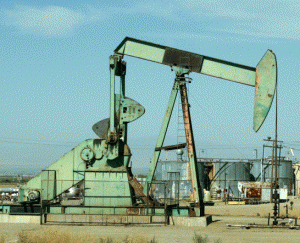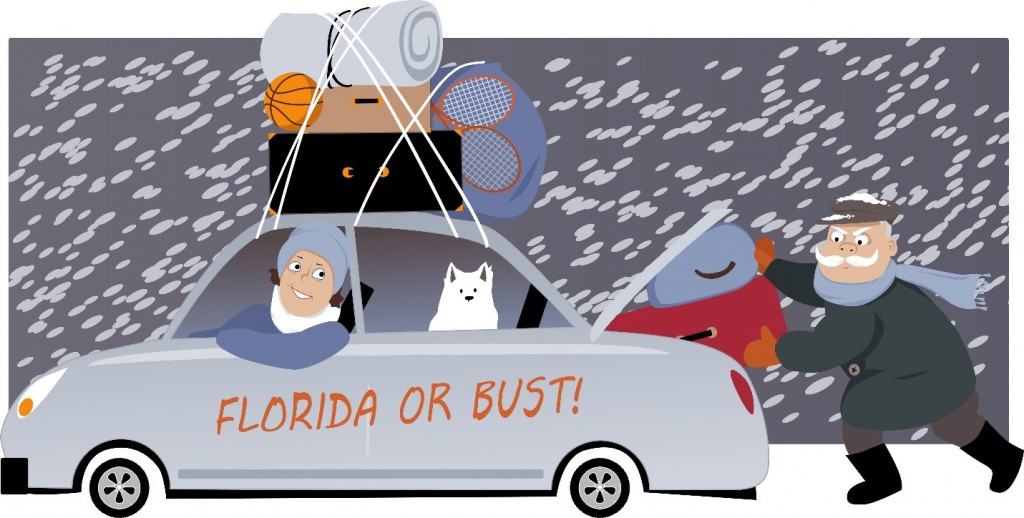As the cold weather begins and the winter winds start to blow, many retired Canadians pack their bags and head south to the more hospitable climates of Florida and Arizona. This year, it looks like the Loonie will be joining them in heading south, only for the Loonie, this means devaluation not decamping for sunshine.
This move has been in the making for a long time but it didn’t start accelerating until September. Since then, USDCAD has been rising steadily but with a semblance of control. That control appears to have been abandoned last week.
It started on Thursday. The highly anticipated European Central Bank meeting delivered a stimulus package which was well below the market’s inflated expectations. That led to a sharp and nasty unwind of many short EURUSD and EURCAD positions. USDCAD rallied.
Friday brought the long awaited Opec meeting in Vienna. Oil traders were holding out hope for Opec to deliver even a symbolic production cut. Alas, that was not to be. The Opec statement reported that the “Conference respected the input and ideas of all the Member Countries to find ways to deal with the challenges that they face in the global oil market today.” Unfortunately, “respecting input and ideas” and implementing them are two very different actions.
Opec chose to dispense with output limits altogether, setting the stage for stubborn oil price bulls to bail out of positions. That they did. It started slowly on Friday afternoon but by Tuesday morning, WTI had shattered the 2015 floor of $37.75-80/barrel and made a new low.
The US and Canadian labour reports, also on Friday, had the same effect on the Loonie as Holly Holm’s roundhouse kick had on Rhonda Rousey. They both dropped. US nonfarm payrolls surpassed the forecasts and gained 211,000 jobs, a number that many believe is all that the Federal Open Market committee needs to justify raising US interest rates on December 16th, the first rise in 7 years. The Canadian employment report was not nearly as impressive. In fact, it was weak, confirming a very slow and sluggish rebound in the Canadian economy.
 All three events had one thing in common; they weren’t good for the Loonie. Of the three, the Opec decision was the most damaging. USDCAD and WTI have been trading tick for tick over the past three days. The Tuesday morning break of the 2015 low in WTI coincided with USDCAD shattering the 2015 peak and long term Fibonacci resistance as well. If oil prices continue to decline, a move to 1.4000 cannot be ruled out.
All three events had one thing in common; they weren’t good for the Loonie. Of the three, the Opec decision was the most damaging. USDCAD and WTI have been trading tick for tick over the past three days. The Tuesday morning break of the 2015 low in WTI coincided with USDCAD shattering the 2015 peak and long term Fibonacci resistance as well. If oil prices continue to decline, a move to 1.4000 cannot be ruled out.
The Bank of Canada (BoC) is another wild card. Last January, the BoC responded to crashing oil prices with a rate cut, defending their actions as necessary to combat downside risks to the inflation profile. Back then, WTI prices had declined from $77.00/barrel in early November, just before last years Opec meeting, to $45.00/barrel on January 21, 2015, when the BoC reacted. That was a decline of 41.5%.
This year, WTI was hovering around $42.00/barrel prior to the Opec meeting. and is now sitting at $37.70/b. The next BoC interest rate decision and Monetary Policy Report (MPR) are due January 20, 2016. If WTI has dropped to $32.00/b by then, (which is the target, if today’s break of $37.75 is sustained), how will Mr. Poloz react?
Oil prices were nearly $47.00/b on October 21, 2015 when the BoC released the MPR. At that time, they expected WTI to average $45.00/b and that guess was nearly $20/b below their July forecast. The difference from their July forecast and today is 43%.
Coincidence. Perhaps, but the very possible decline in WTI prices to $32.00/b by January 20th, 2016 (43% drop) is slightly worse than the 41.5% decline in WTI prices in 2015. That was enough to trigger a rate cut then. Why not again?
Bank of Canada governor, Stephen Poloz gave a speech to the Empire Club of Canada on Thursday. He used this venue to discuss how the BoC could respond if their base economic forecasts proved to be wrong. He talked of about the four main components of the tool-kit available to the Central Bank. They are: Forward Guidance, Large Scale Asset Purchases, Funding for Credit and Negative Interest rates.
To be fair, before he said anything about his tool-kit he said, “I need to be absolutely clear about two things. First, today’s remarks should in no way be taken as a sign that we are planning to embark on these policies. To reiterate, our base case sees the Canadian economy returning to full capacity around mid-2017 and the risks to the outlook are roughly balanced. We don’t need unconventional policies now, and we don’t expect to use them. However, it’s prudent to be prepared for every eventuality”
And before I go anywhere further, I will call your attention to the following quote to Reuters, by Swiss National Bank Vice President, Jean-Pierre Danthine on Jan 12, 2015.
“We took stock of the situation less than a month ago, we looked again at all the parameters and we are convinced that the minimum exchange rate must remain the cornerstone of our monetary policy,”
The Swiss National Bank ended the minimum exchange rate 4 day’s later and wreaked havoc in FX markets. The point is, things change and they change rather quickly.
You will note that the first tool in Mr. Poloz’s tool-kit is forward guidance. Perhaps today’s speech contained an element of that.
The risk of additional oil price weakness, rising US interest rates, the on-going slowdown in China and an uneven US recovery will ensure further USDCAD gains in the next few months.
By David Marks , Agility FX Analyst







